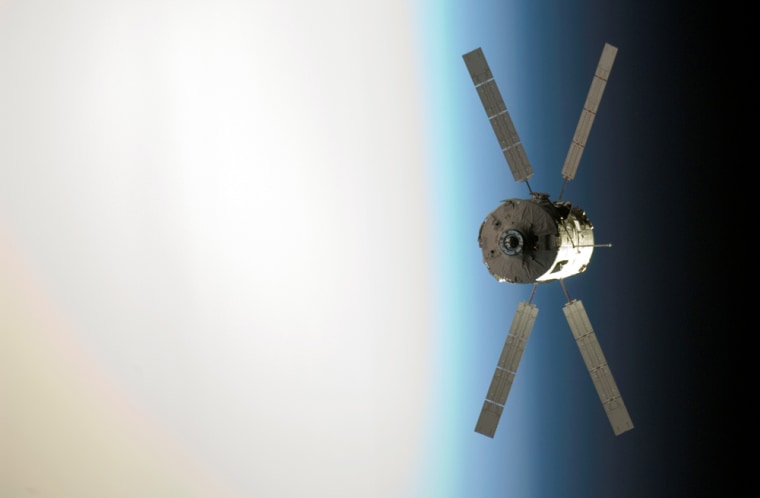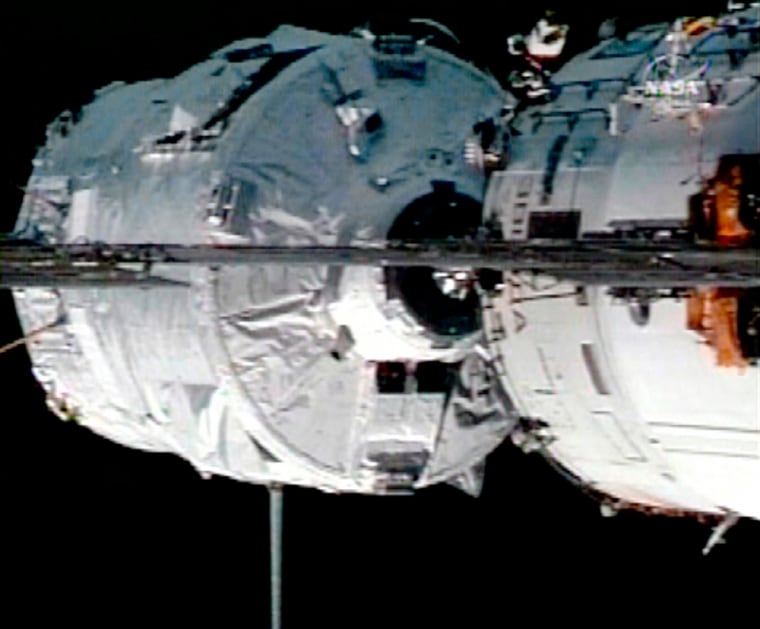A new European cargo ship flew up to the international space station and docked Thursday, successfully delivering food, water and clothes in its orbital debut.
The unmanned cargo ship, called Jules Verne, was operated by flight controllers at a European Space Agency center in Toulouse, France.
NASA's Mission Control in Houston and Russia's control center outside Moscow kept close tabs on the operation, which culminated in the morning linkup more than 200 miles (320 kilometers) above the Atlantic. So did the three space station residents.
Twice over the past week, flight controllers in Toulouse guided Jules Verne to close encounters with the space station. The practice gave them confidence that the spacecraft's systems would perform as planned for the docking. Indeed, everything seemed to go smoothly with the automatic linkup.
"Around the world in 26 days, the European Space Agency's Jules Verne ... has pulled into port at the international space station," announced Mission Control commentator Rob Navias in Houston.
Jules Verne — one of the European Space Agency's major contributions to the space station — rocketed away from French Guiana on March 9 with several tons of oxygen, fuel, water and other supplies. It had to wait for the shuttle Endeavour to leave the orbiting complex; Endeavour's mission ended last week.

Jules Verne is named after the French science-fiction writer who wrote about extraordinary voyages under the sea, through the air, and into space. His works included "Around the World in 80 Days" and "From the Earth to the Moon."
The spacecraft will not be opened, and its contents unloaded, until Friday.
European space official expect to launch a supply ship every two years. The ships are not reusable; once unloaded and detached from the space station, they will be directed to fiery re-entries over the Pacific. That is what happens to the smaller Russian supply craft that regularly drop by.
The space station will need to rely on these unmanned spacecraft for supplies, tools and science experiments once NASA's space shuttles stop flying in 2010. Besides Europe and Russia, Japan also will provide supply ships, beginning next year.
Europe's Columbus lab arrived at the space station in February, and the first section of Japan's Kibo lab came on board in March.
Next week, meanwhile, the Russians will launch a new space station crew aboard a Soyuz rocket. Coming home after a six-month mission will be commander Peggy Whitson and her Russian colleague, Yuri Malenchenko.
